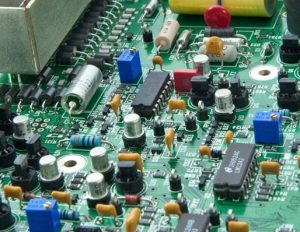Mastering Industrial Electronics Repair Quality Control for Manufacturing Excellence

Industrial Electronics Repair Quality Control is a key component of any manufacturing operation. A quality control system identifies good products from bad ones and helps workers correct mistakes.
For example, a greasy-looking residue from solder traces may raise flags for your customer’s QC inspectors. In this case, you might have to rework the product.
Importance
Quality control is a critical process that ensures consistency and accuracy across products. It includes inspection, testing, and documentation to identify flaws and deviations from standards. It also covers implementing corrective measures to resolve issues that arise.
For companies producing electronics, quality control is essential to minimize costs and losses, reduce liabilities, and maintain a good reputation. This involves meeting deadlines and delivering on promises, while discovering potential issues and resolving them before they have a negative impact on the production process.
This is especially important as the world becomes more and more globalized, requiring companies to produce on an international scale. Consistently high-quality products and services will build a strong brand image, boost efficiency, and foster a solid customer base. This will allow businesses to expand their reach and compete on a global scale. However, a poorly implemented quality control system can result in a number of problems including waste of resources, human errors, poor products and failed product specifications.
Reliability and Longevity
Industrial electronic devices can provide tremendous value for your company on the factory floor by automating processes and providing precision. But these electronics are also prone to breakdowns just like any other piece of equipment or machine. This means they need to be repaired and kept up-to-date with preventative maintenance plans that combat corrosion.
Repairing and maintaining electronics is a crucial part of combatting planned obsolescence, which is one reason why manufacturers are increasingly focused on the reliability and longevity of their products. However, it’s important not to confuse reliability with longevity as the latter is often confused with the MTBF (Mean Time Between Failure) value of components.
Increasing the repairability of electronics can contribute to new business models such as device as a service, upgrade plans, parts and module sales, graded product resale, and maintenance programs, helping to reduce scope 3 emissions and contribute to net zero and other sustainability goals. It can also support the development of circular supply chains.
Compliance with Standards
In the electronics industry, there are many regulations that must be met to ensure product quality and safety. These requirements are often costly and time consuming to meet. However, they are necessary to preserve the safety of consumers and businesses that use these products.
Risk management is an essential part of any quality control process. It helps companies discover potential issues then rectify them to prevent damage to the sua bien tan production process. It also focuses on keeping costs at a minimum and meeting deadlines.
Compliance with standards is essential for any electronics company that wishes to compete in the global market. There are many different standards that must be met, depending on the type of device. For example, if you manufacture electronic devices that require electricity to operate, your company must comply with European Union (EAEU) Regulation 048/2019. This includes a requirement that your devices must pass inspections and be issued with a certificate or declaration of quality.
Cost-Efficiency
Quality control in repairs isn’t just important but also a cost-effective way to reduce expenses. It helps companies avoid unnecessary waste and loss. It also ensures that all components and processes are up to speed and working properly to avoid setbacks.
Key components of quality control in electronic repair include:
PCB testing – a visual inspection of the circuit board to see if it matches a schematic – this can help prevent errors such as putting a component in the wrong place. This process can also uncover missing components.
Resistors replaced – these passive components, which resist electrical current and often act like a resistance to power, are found in most circuits and are a common casualty of damaged electronics. They are usually replaced when they fail, and a repair center will make sure that the new ones are the same type as the originals.
A good repair center will offer free evaluations for equipment and provide quotes for repairs with no bench fees. They will also offer a good warranty that covers parts and labor.





